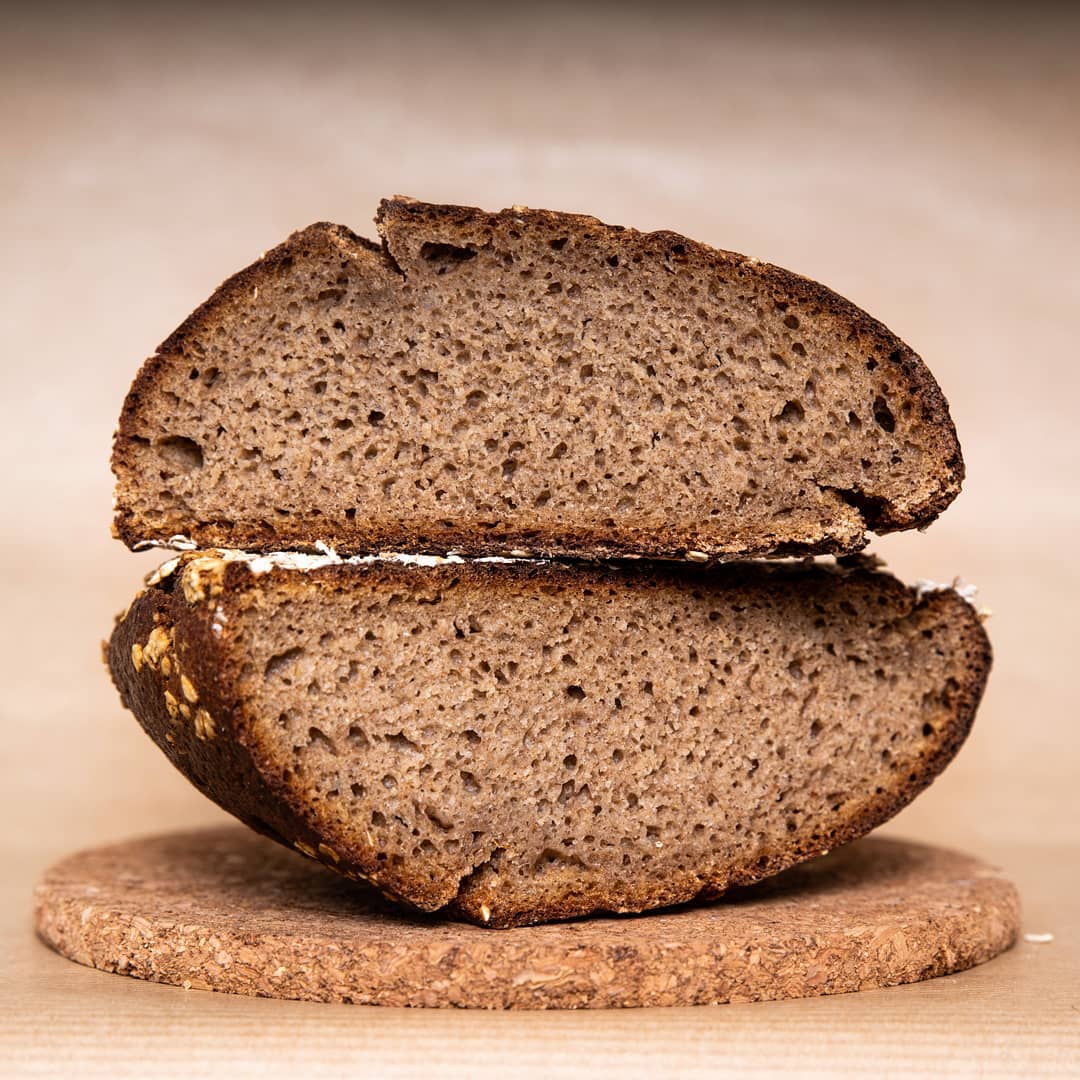I’m a noob with sourdough and I have been having a hard time getting information on how to maintain a consistent amount of starter. Is it generally appropriate to discard half and replace that half with fresh flour and water?
Related, is “discard” in any meaningful way different from the starter itself, or are the recipes for discard scones/crackers/whatever just labeled that because you aren’t using the starter for rise?
The best way to keep a starter that you’ll see recommended in books is to have a fairly large amount (enough to directly throw into a recipe) that you keep well fed. That makes the best, most consistent bread possible, which is why bakeries do it that way, but if you are just some home baker, you probably dont want to either bake everyday or throw out starter every day.
Personally, I like to keep a little jar in my fridge with 60 g of starter in it. When I want to make bread, I’ll pull 30 g out, and step that up to whatever amount I want to use. I also replenish the fridge jar, and let it sit at room temp until I see it start bubbling, and it goes back in the fridge (i like it to have a little headstart at room temperature so it doesn’t spend too long in a state hospitable to mold). I never throw any starter away. If the timing works out such that I can’t put dough together until after the starter has “peaked”, sometimes I’ll just pull some off to make a sourdough pancake or something, and I’ll feed the remainder back to the weight it needs to be.
I’ve seen some recipes that specifically mention using “unfed starter” or “discard”. It has lots of flavor, but it’s less good at providing leavening, since the yeast/bacteria activity has slowed down. Sometimes to use some up, I’ll just make bread with it, but add in some commercial yeast. You get the taste of sourdough, but predictable rise of commercial yeast.
Yeah, half is okay. You don’t even have to replace it fully, though doing so keeps the starter hydration stable, which means it’ll slot into recipes more precisely. Going by halves makes the math easy.
Discard is starter, it just isn’t at peak. So it won’t give the best results for bread, where you want the culture at its most active and energetic. It’ll still work for sure, and it won’t even be bad bread. To the contrary, it can end up being damn good. It just won’t have as open a crumb usually, unless you do longer ferments, or at least that’s been my experience.
All a starter is, is a culture of yeast and microbes. When you feed the culture, everything has fresh, abundant nutrients, and the waste material is diluted. So, the half that you keep has the ability to grow rapidly, with the microbes reproducing at a higher rate, as well as producing waste at a higher rate. That means more CO2 and alcohol.
As those fresh nutrients get used up, the wastes accumulate and the microbes slow back down their reproduction. That’s exactly the same thing as happens when you’re making bread, it’s just that when you’re making bread, there’s so much food for them that they don’t slow back down their reproduction (and the CO 2 production with it) until well after you’ll be baking it.
So, when we discard, what is being discarded is a deeply flavored mix, with some tired but perfectly viable microbes. If you put them into the usual recipes for discard and let them sit longer, you’ve essentially got a new batch of starter. But discard recipes don’t rely on the CO 2 production for loft, and they do rely on those waste materials for their sour taste. Those wastes are at their most concentrated before feeding on an active schedule.
That’s essentially the goal of long, cold ferments. You get the microbes reproducing and producing CO2 fast enough to rise, but slow enough that the waste materials accumulate for a deeper flavor.
That’s why cool stored starter is so intensely flavored. The waste climbs to its peak right where it’s going to start killing off the culture by the time you feed it weekly (or so). The yeast and lactobacilli are doing their work slower, but for longer. Less bubbles, more tang.
This guy starts.
Good answer, although I wonder if we focus too much on the waste as being the flavor as opposed to the bacteria and yeasts. Do you have any idea how much of the mass of a ripe starter is actually bacteria and yeast as opposed to the lactic acid and whatever other bacteria and yeast pee is produced?
One thing is sure, dry yeast tastes excellent. It tastes so good that the food industry uses it on crisps and other addictive food :)
Well, I’ve never run across anything that breaks down starter that well. I’ve seen percentages of the microbes, broken down by species. And I’ve seen rough percentages for alcohol as a single component, but never a full breakdown.
But you can actually taste the microbes. The lactobacilli exist in other things. An active culture sour cream is going to develop a pool of liquid, and while it definitely has the acids that are the waste of them, it tastes different than if you have sour cream that has had the bacteria killed off. It’s a tad more umami, similar to the flake/nutritional yeast flavor.
But, when it comes to the taste of the bread or other products, it’s definitely the acids produced that give that classic sourdough flavor. Those acids when produced externally and added to a dough ends up tasting almost identical, if not as nuanced and deep. Lactic acid is a pretty distinct and strong flavor.
That being said, you can taste the yeast itself in most bread. Not just the booziness you sometimes get, but that cheesy, nutty goodness.
This article has a graph of the percentages of various microbes.
discard is no different, you use half or so each time to make the sponge/rise. Consistent amount is about eyeballing it, not too little, not so much as to cause Overflow
Thanks for all the info, it’s really helpful!
The people who talk about discarding generally mean what you describe. The discarded starter is usually not as active as the freshly fed one. My guess is that it’s mostly the yeast that is missing in an older unfed starter.
That being said, I bake every week with good success and don’t discard any starter. I usually keep my sourdough in the fridge and take it out on the night of thursday, feed it a bit (wholemeal wheat) and let it stand at room temperature. On friday evening I feed again but this time to full size (to get around 300g). On saturday morning I bake using almost all the starter. I put back the “dirty” jar with the rests of the starter into the fridge waiting to be fed the week after. Be sure to find your own routine. Also beware that this might not work if you bake less than weekly as the sourdough might become too sour and thurn dark an loose its yeasts.
Have fun!




